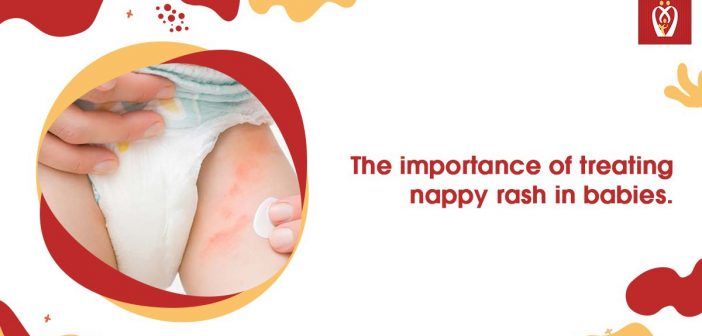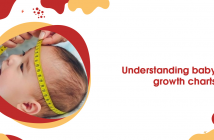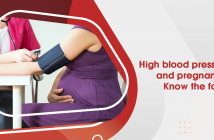If your baby’s bottom is red and sore, they most likely have diaper rash. While it might be unpleasant for your kid at times, it’s usually pretty simple to cure, and a few simple precautions can help prevent it from recurring.
What is the prevalence of nappy rash?
Nappy rash is a prevalent problem. In fact, it’s estimated that one out of every three babies suffers from nappy rash at any given moment. Although it can occur at any age when your infant is wearing a diaper, it is most common between six and 18 months. In neonates, nappy rash is less prevalent.
What is the appearance of a nappy rash?
You’ll be able to tell whether your infant has a nappy rash. The skin around their diaper area may be: red and swollen (this symptom might not be as noticeable on black or brown skin), splotchy, heated to the touch, and gleaming. Small blisters or scales may form if the rash persists. Your baby’s genitals, the inside of their thighs, and their bottom can all be affected by nappy rash. It could start as a few tiny patches that spread across multiple nappy changes, or it could occur out of nowhere. Your baby may not be bothered by a mild nappy rash. However, if it’s hurting, you might notice them sobbing after a wee or after changing their nappy, or they can appear out of sorts.
What causes a nappy rash, and how can you prevent it?
Even the most absorbent nappy will leave your baby’s skin damp. The primary cause of the nappy rash is contact with wee or poo, which softens and damages the outer layer of your baby’s skin. Nappies rash is more likely to develop if a baby is left in a wet or soiled nappy for an extended period. Even if they have regular, clean diapers, babies with sensitive skin can get nappy rash. An itchy baby’s skin might also be caused by a nappy that rubs against it. Other variables can also raise your baby’s chances of acquiring diaper rash. These are some of them: Diarrhoea.
Nappy rash is common in babies who have diarrhoea. Because the compounds in poo that might irritate your baby’s skin, known as enzymes, are more active in runny poo than in healthy poo, runny poo is more irritating to your baby’s skin.
Antibiotics
Thrush, a fungal infection, can sometimes cause nappy rash. Antibiotic use increases the risk of thrush. So, if you have to administer antibiotics to your baby, they may be more prone to diaper rash until the course is over.
Thrush in the mouth
Even if your kid isn’t on antibiotics, they could get a fungal diaper rash. Oral thrush infects the nappy area in some situations because the fungus passes through the digestive tract and into the faeces.
Allergies
An allergic reaction to a product that has come into contact with your baby’s bottom, such as a specific kind of nappies, perfumed baby wipes, or a detergent used to wash a cloth nappy, might cause nappy rash. Allergic contact dermatitis is the medical term for this condition. When a rash appears shortly after switching to a new product, it’s sometimes easy to figure out what caused the reaction. However, it may take you longer to figure out the cause in some cases. In addition, a dietary allergy or intolerance can occasionally cause recurrent diaper rash. Speak to your health advisor if you feel a certain food is causing your baby’s nappy rash.
What is the best way to cure my baby’s diaper rash?
It’s OK to treat your baby’s nappy rash yourself if it’s light and they don’t appear concerned. Here’s how to do it:
- Change your baby’s nappies every three to four hours, or as soon as they’ve done a poo or a wee, whichever comes first.
- Choose a super-absorbent nappy to limit the quantity of wetness adjacent to your baby’s skin. The + sign on disposable nappies indicates that they are more absorbent. If you’re using cloth diapers, utilise a booster pad and stay away from plastic nappy wraps. They can exacerbate the rash by trapping moisture.
- Make sure you’re using a nappy that’s the right size for your kid. A tight nappy will trap more moisture against your baby’s skin, whilst a loose nappy will not absorb enough moisture.
- Clean your baby’s genitals and bottom from front to back with water and cotton wool or unscented, alcohol-free baby wipes when changing their diaper.
- If your baby’s skin is damaged, peeling, or particularly sensitive to the touch, gently clean it with a squeezy bottle of warm water without rubbing. Alternatively, apply a warm washcloth to their skin.
Using a soft towel, gently pat your baby’s skin until fully dry.
Before putting on a clean nappy:
- Apply a thin coating of barrier lotion or ointment. You won’t require much.
- Apply a tiny bit and rub it in until you can see your baby’s skin underneath. The cream will establish a barrier on your baby’s skin, protecting it from wee and poo.
- Ask your pharmacist for help if you’re unsure which one to get.
Allow as much nappy-free time as possible to allow the air to reach your baby’s skin. Place them on a towel in a warm area or take their nappies off for a few minutes after a change. Put them down in a room with an easy-to-clean floor or outside if it’s safe and warm if they’re old enough to move around.
When should I see a doctor regarding nappy rash?
Consult your GP, health visitor, or practise nurse if your baby’s diaper rash is spreading or growing worse or if they are in pain. To relieve the pain, your baby may be given a hydrocortisone cream. Ask your doctor if you need to use a barrier cream in addition to the hydrocortisone cream and when you should use it. Your GP, health visitor, or practise nurse may advise you not to use barrier cream if your baby’s diaper rash is caused by thrush. Instead, they’ll give you a lotion to help you get rid of the fungal infection. If your child has oral thrush, a gel or liquid prescription may be prescribed to treat it. If a bacterial infection causes the nappy rash, medications may be prescribed to help clear it up.
You can manage your child’s health with Nurturey’s PinkBook. The Health report allows you to manage overall health indicators, including eyesight and allergy information. Online health services offered by Nurturey can also be linked to your GP account. This allows you to view both your child’s and your own records. In addition to making appointments with your doctor, you may also reorder medications for yourself and your family, as well as schedule appointments for your child, pregnancy, and family.







